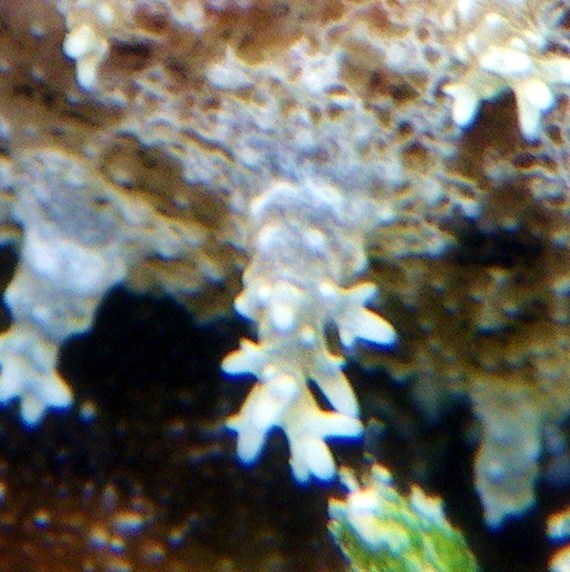Anatomy & Physiology
General anatomy
All gastropods have a torted body plan, meaning that the whole body is twisted irrespective of the shell. This means that the digestive tract runs from the mouth at the bottom of the head, through the stomach to the anus, which is situated on top of the head (Ruppert et al. 2004). This torsion also moves the gills to the front of the body as well as altering the layout of all other anatomical features such as the nervous and circulatory systems (Ruppert et al. 2004).
Siphon
The siphon is at the front of a cowrie, just above the head and protrudes from the specialised extension of the aperture. This siphon is used in respiration to draw water to the gills (Coleman 2003; Ruppert et al. 2004).
Mantle projections
The function of the mantle projections, or papillae, of C. xanthodon, as with other cowries, is not known. There have, however, been two purposes hypothesised, firstly that they contain sensory cells, or secondly, they help with camouflage, with the complete change of appearance when the mantle is extended or retracted (Coleman 2003, 2008).

Radula
The general radula of cowries has around 200 rows of teeth which are consistently replaced as old rows become worn. There are generally 7 teeth per row, making approximately 1400 teeth at any one time (Coleman 2008). The morphology of these teeth determines the diet of the organism, though the radula morphology of C. xanthodon has not yet been studied.
Sensory systems
Gastropods have a complex nervous system which is cephalised and twisted through torsion. There are many organs involved in the sensory system of gastropods, including eyes, tentacles, and osphradia which are used for olfactory sensing (Ruppert et al. 2004). The eyes of cowries do not contain lenses, however are still considered as complex. Cowrie mantles may also play an important part in sensation, though the function of the papillae is unknown as of yet (Coleman 2003).
|